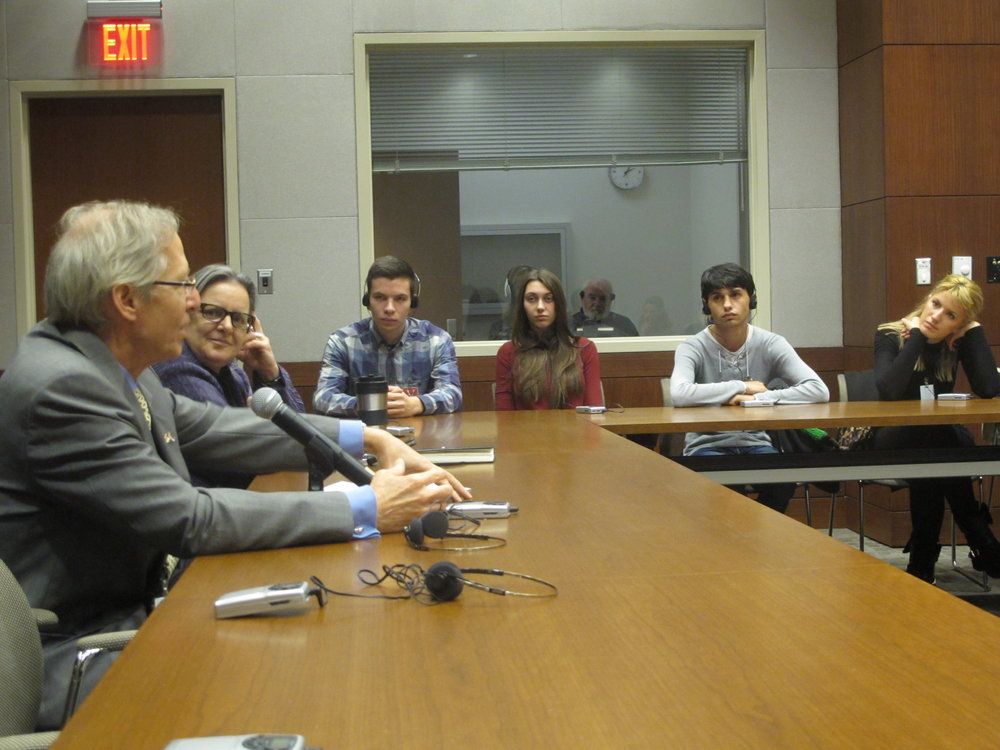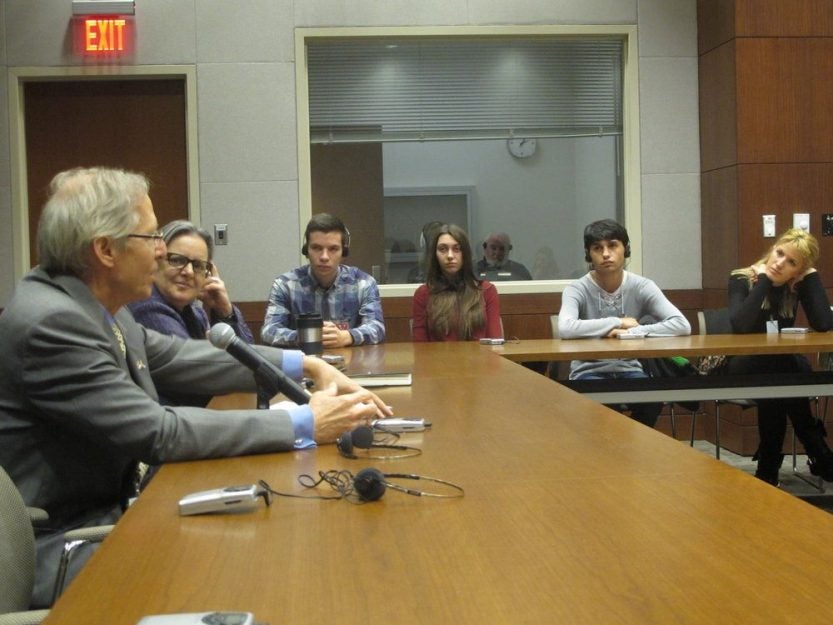 By Rebecca Hope
By Rebecca Hope
This guest post was originally published on the YLabs blog. Rebecca Hope discusses the importance of youth participatory approaches, which can place young people at the center of program design. She highlights the Harvard’s FXB Center and CIP Center’s 2012-2014 Reclaiming Adolescence project in Serbia, which aimed to address anti-Roma racism by strengthening Romani youth leadership in research and policy making. The program involved youth at every stage – from design to prototyping to implementation.
Today we’re in the room with a collection of the world’s foremost thinkers in global health and a crowd of teenagers. The YLabs team are at “Coming of Age,” Harvard T.H. Chan School of Public Health’s first Adolescent Global Health Symposium. And we’re here to bring these two groups together to design for health.
Our challenge is to help public health leaders find better ways to involve youth in the design of programs to improve their health. Sounds obvious, doesn’t it? If we are designing health programs, products and services for youth, we want to know what they think. Heck, we want them to design it for us. With the largest youth population ever on the planet, marketing experts from the business community know they must tailor their products to this important market. The exploding success of products such as WhatsApp, Facebook and mobile money among youth in emerging markets is testament to the care that’s been taken to put young people at the center of design, demand generation and distribution efforts.
Yet, in public health, youth involvement in design is in its infancy. Too often, programs are designed by smart grown-ups around a whiteboard, with a scientific literature review of what’s already been done. Youth might be consulted through focus groups, but sometimes not until after the program’s been designed. Youth perform songs and dances at international development conferences, but too often their voices are only heard in the special ‘youth events.’ This is a missed opportunity to empower and engage marginalized youth by including them in development efforts. Youth engagement needs to entail more than a couple of focus groups, if we are trying to design services that truly meet the evolving needs of today’s tech-savvy, early-adopting, culturally-evolving adolescents.
Example: at an international conference recently, an NGO representative was talking about their international youth programs.
“How did you involve young people themselves in designing the programs?” asks a voice from the back of the room.
“It’s very hard to involve youth in the communities where we work in design,” he replies. “The youth we work with have low levels of education, so it’s a lot of work to bring them into research.”
We argue that it’s worth it. If we as a public health community want to design and deliver programs and services that really work for youth, then designing with youth should be at the heart of our work. One of the strongest recommendations of the 2016 Lancet Commission for Adolescent Health and Wellbeing is that we must develop processes that engage “adolescents in the design and implementation of programmes and policies that affect them and their peers.” The single most important priority identified in a survey of adolescents and youth was that “Adolescents and youth should be supported and empowered to contribute to designing, implementing and assessing policies, programs and systems that contribute to their health and wellbeing.” At YLabs our motto is no design for youth, without youth.
Youth participatory approaches have long offered a way to put young people at the center of program design. Harvard’s FXB Center and CIP Center’s Reclaiming Adolescence project implemented in 2012-2014 in Serbia aimed to address anti-Roma racism by strengthening the Romani youth leadership in research and policy making.
The two organizations used participatory action research to amplify the voices of young people in matters concerning their lives. Romani and non-Romani young people proposed and led research, formulated policy recommendations, and implemented grassroots activities that tackled stigma and discrimination against Romani children and youth. “We worked closely with Romani and non-Romani youth and scholars to build up skills in conducting ethical, professional, culturally sensitive and participatory Roma research. In Reclaiming Adolescence, we showed that youth based participatory approaches and youth leadership actions can generate more accurate insights into the causes of Roma rejection by the educational system,” Margareta Matache told us, the director of the Roma Program at Harvard.
Human-centered design (HCD), is a process that has been used for decades by the business community to develop products, technologies and services, and more recently to develop medical products, health services and mHealth technologies. We think it offers a robust, proven process to effectively engage youth in health programming. Initial studies suggest that using a HCD approach helps develop solutions that correspond more closely with user needs. It’s been used effectively to redesign palliative care services, vaccine safety communications and cancer services and to develop games to improve adolescents’ mental health and mobile apps to support people living with HIV. In resource-constrained settings, data is emerging that suggests that a youth-centered design approach may better engage adolescent girls with sexual and reproductive services in Zambia than standard care.
A youth-centered design approach engages youth at every stage, from design to prototyping to implementation. We think that putting young people at the heart of the design process, leads to the development of more desirable products and services that respond better to and evolve with young people’s needs. Similar to youth participatory action research, youth participate at all stages of the design and implementation process to identify the barriers in their community to achieving their optimal health and potential. YCD differs from traditional participatory action research in its intended outcome, which is the design of solutions rather than research findings and in its use of prototyping to refine and test possible ideas to reach the final design.
Yes, participatory approaches are sometimes hard work. We travel to meet young people where they are, because youth are more likely to open up when they feel comfortable. We sit in cafes, take a walk or a bus ride. We can design better when we observe the world that surrounds our beneficiaries and start to understand what drives them. It’s led us to pivot dramatically in our designs – seeing how young Rwandans were using Facebook and Whatsapp shifted our plans for an app to teach sex ed, to a social media-savvy approach. Taking a youth-centered approach meant delivering financial incentives for adolescents taking HIV treatment via mobile money, the future of banking for African youth, rather than via traditional bank accounts.
So, back to the room at Harvard, where our high school students and Harvard professors are confidently presenting their ideas to transform the lives of young Kenya women. Ben Kahrl, a high school teacher at the workshop said afterwards: “One of the biggest take-aways for me was the ‘try and fail quickly’ approach – namely try a whole bunch of things, many of which will fail, and move forward. We do not teach that at all in school, but instead the ‘right’ answer that the kids have to know.”
Designing with youth for youth not only leads to better design, but, as we have seen in our work from Zambia to Rwanda to Boston, empowers and encourages youth designers to have the confidence to try, fail, iterate and innovate.
References
Roberts, Jess P., Thomas R. Fisher, Matthew J. Trowbridge, and Christine Bent. “A design thinking framework for healthcare management and innovation.” Healthcare (Amst) 4, no. 1 (2016): 11-14.
Schnall, Rebecca, Marlene Rojas, Suzanne Bakken, William Brown, Alex Carballo-Dieguez, Monique Carry, Deborah Gelaude, Jocelyn Patterson Mosley, and Jasmine Travers. “A user-centered model for designing consumer mobile health (mHealth) applications (apps).” Journal of Biomed Informatics 60 (2016): 243-51.
Schnall, Rebecca, Jocelyn Patterson Mosley, Sarah J. Iribarren, Suzanne Bakken, Alex Carballo-Diéguez, and William Brown III. “Comparison of a User-Centered Design, Self-Management App to Existing mHealth Apps for Persons Living With HIV.” JMIR Mhealth Uhealth 3, no. 3 (2015): e91.
Photo taken with consent by the CIP Center, Reclaiming adolescence youth research team meeting US Ambassador in Belgrade.

